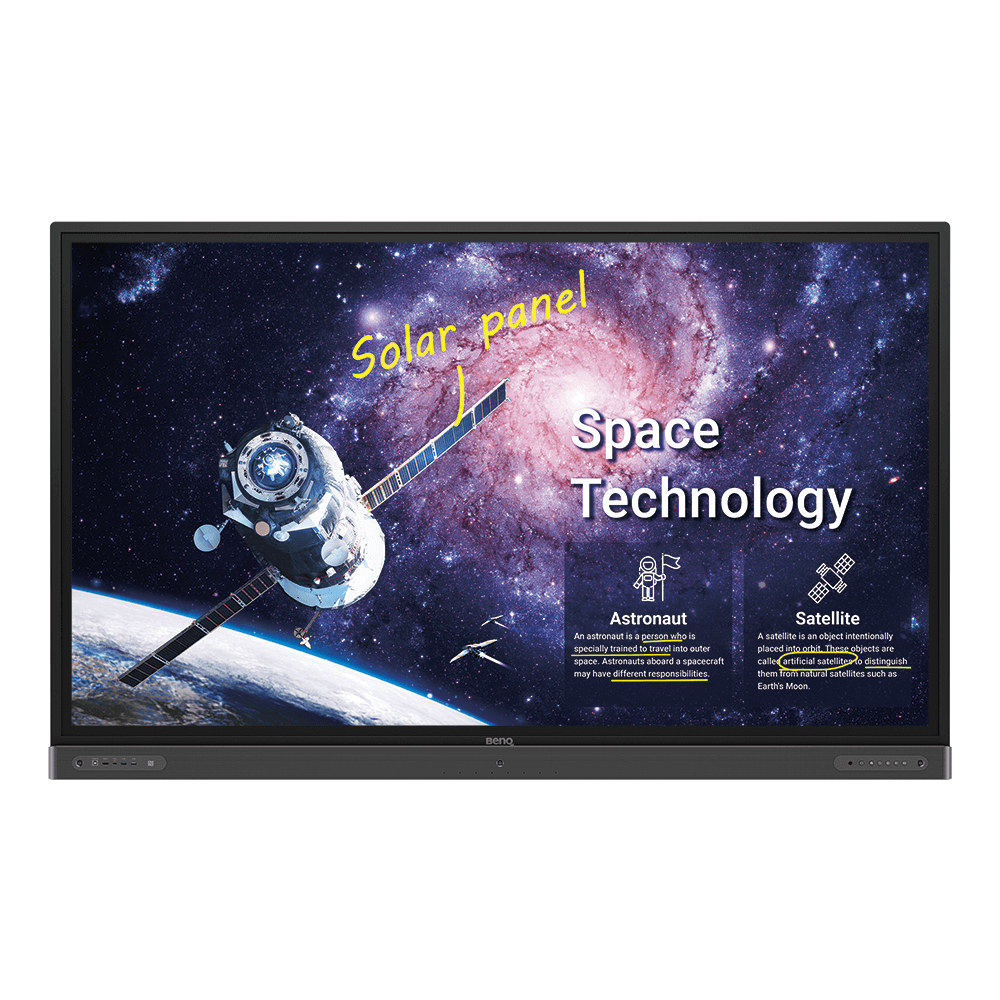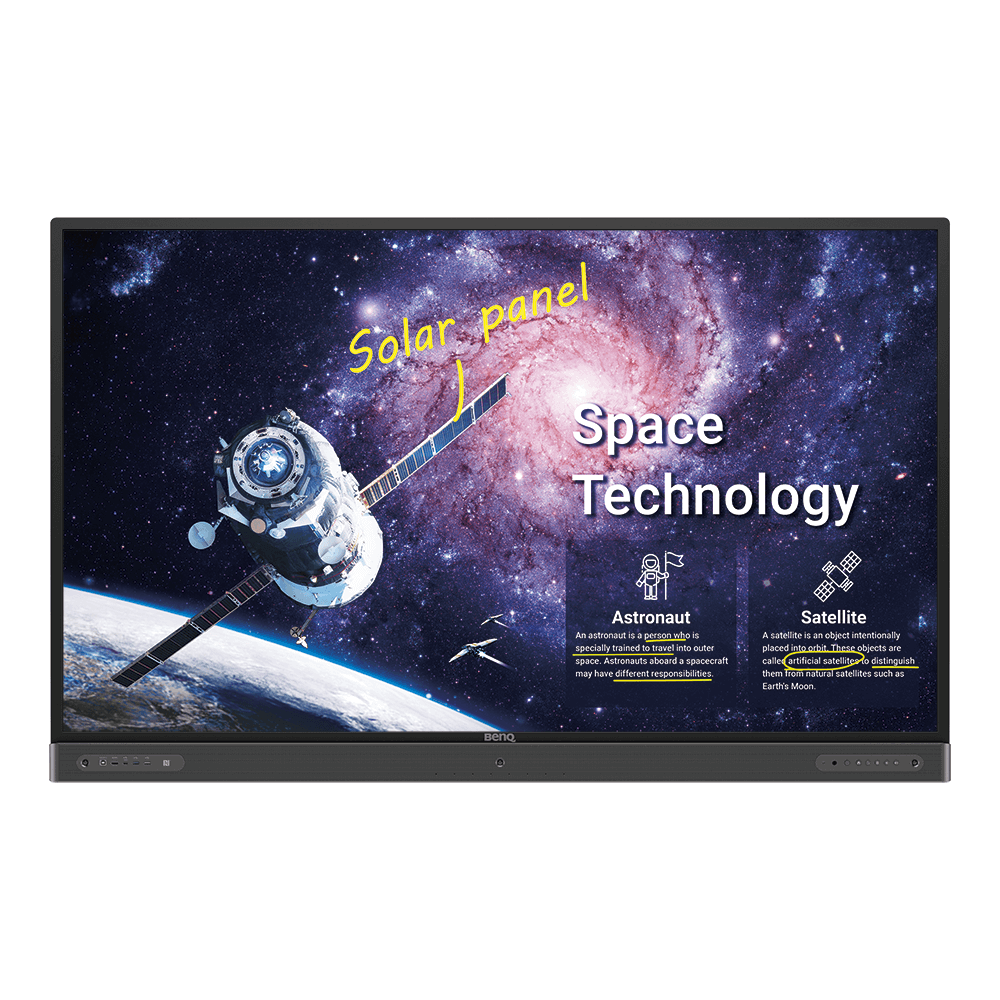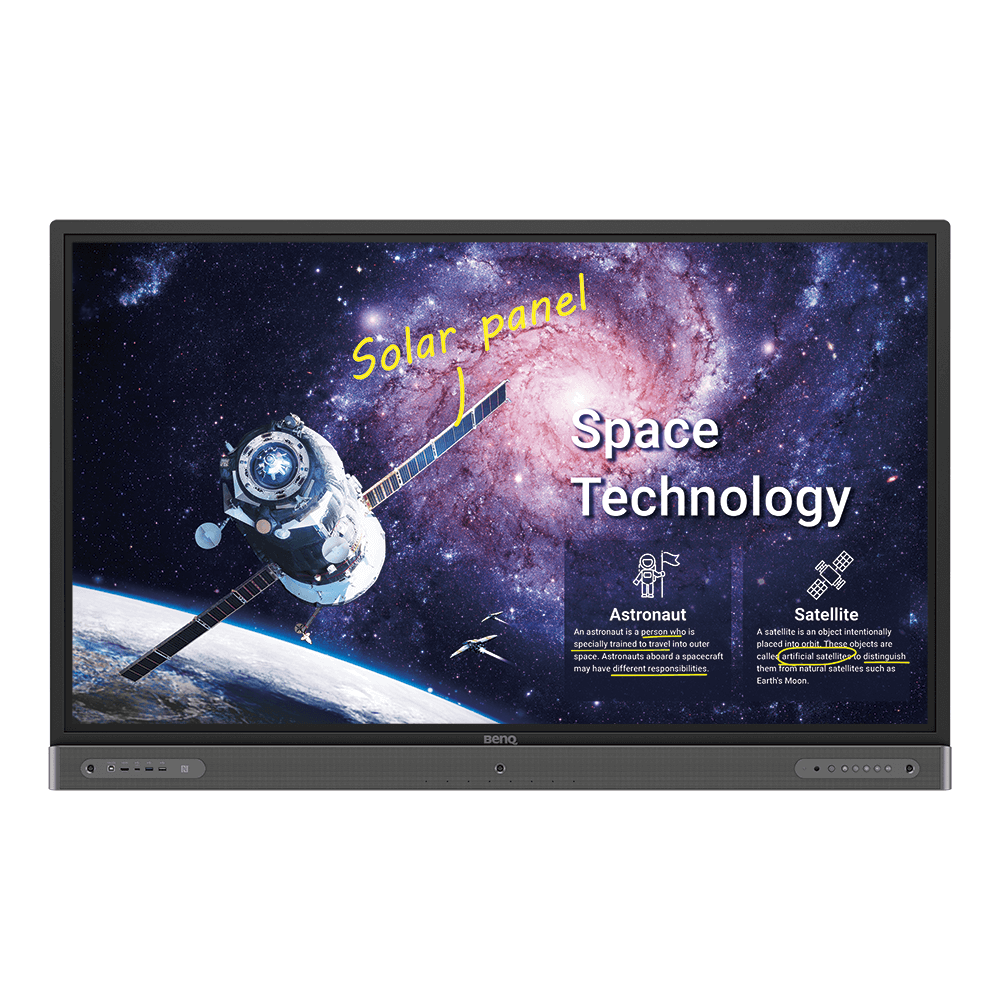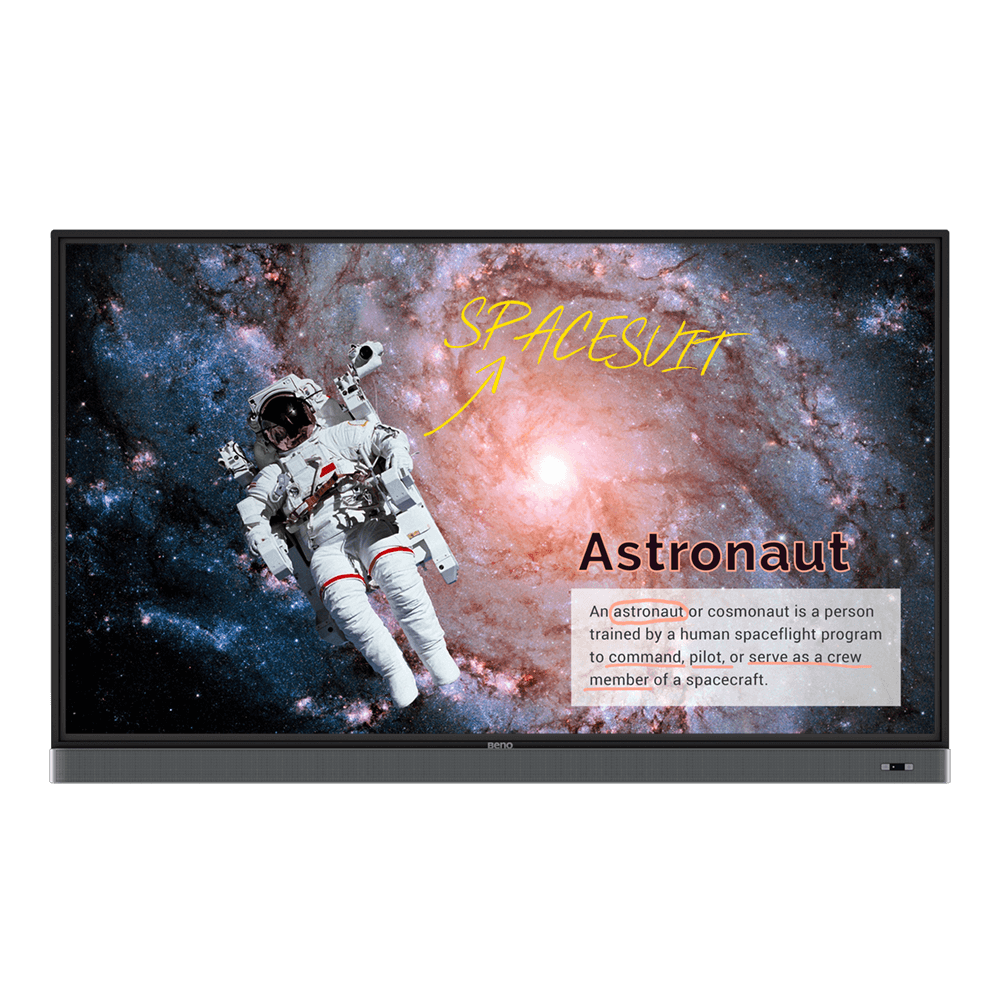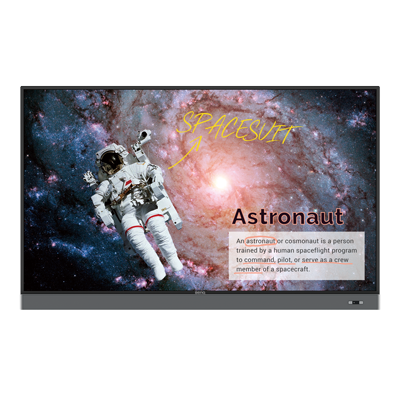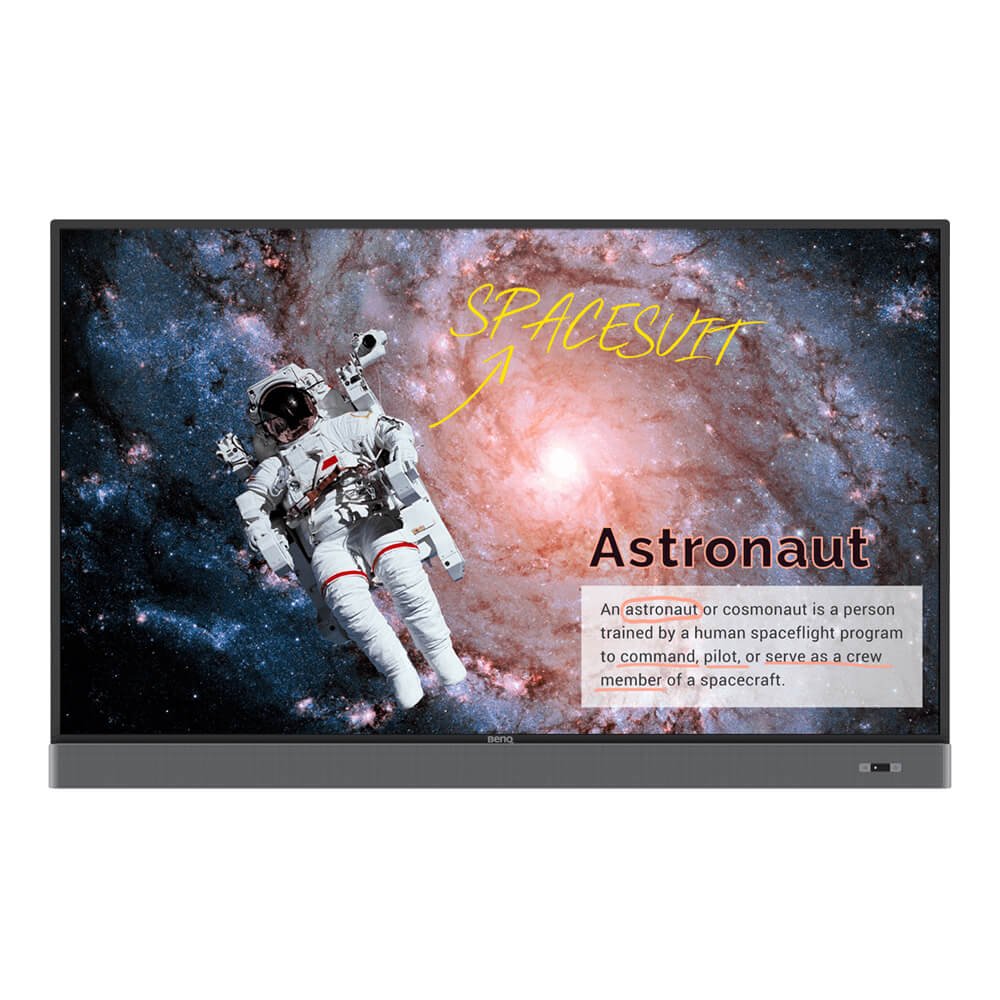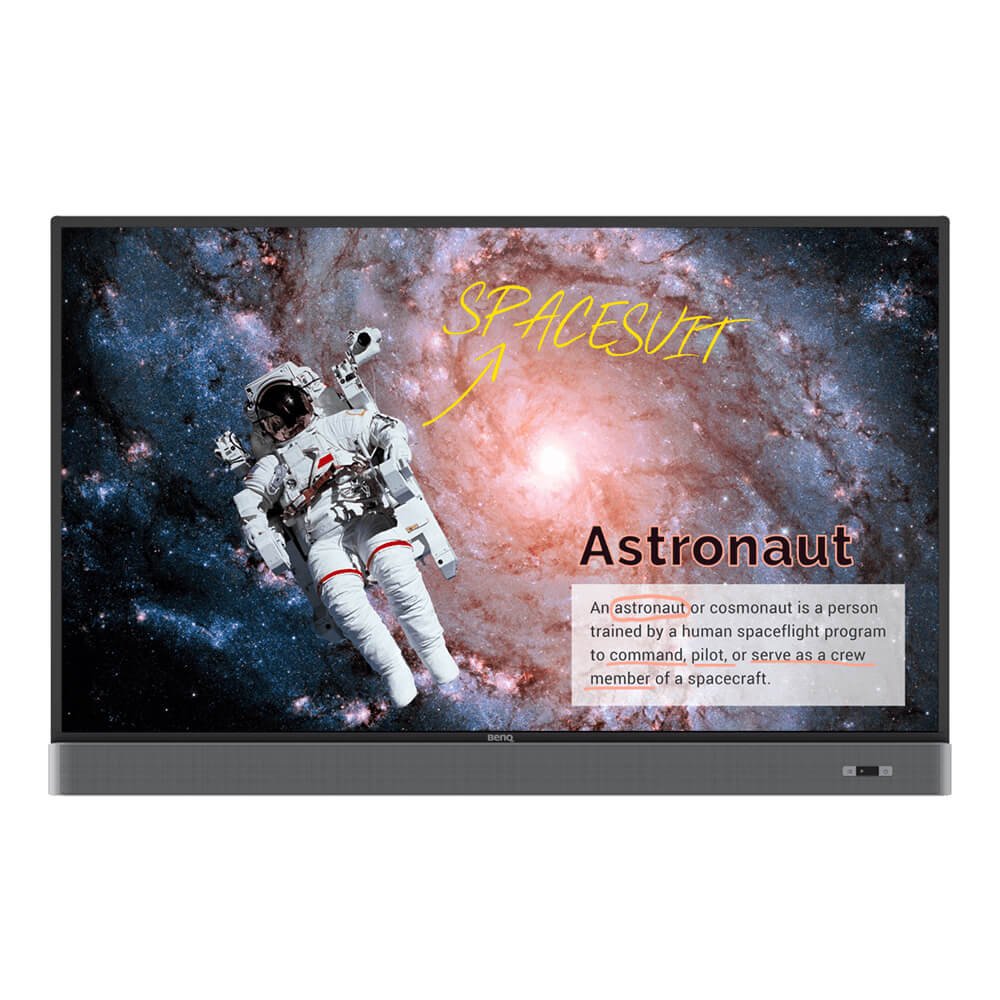Newline RS+ vs. BenQ Board RP Series
- BenQ
- 2021-06-01
Interactive displays are increasingly replacing interactive whiteboards in today’s classrooms. These touch displays offer a new and unprecedented range of learning and collaboration tools. Two of today’s leading manufacturers of interactive displays are Newline Interactive and BenQ. Both brands are installed in thousands of classrooms in North America, so how do these two systems compare – and which one is right for your school? Here are the key elements to review:
Interactive displays are the perfect tool for hybrid classrooms. The ability to run a Zoom or Team app directly from the display, as well as record and share lessons enables these displays to be far more functional than a legacy projector or interactive whiteboard. So what are the functional whiteboard features you want to look for?
Touch Sensor: BenQ Fine IR vs. Newline
The best interactive displays use a highly sensitive IR touch systems to detect inputs on the screen. BenQ’s system is called “FineIR”, Promethean calls theirs “Vellum”, and SMART calls their system “HyPr Touch”. Each is essentially the same in that they optically bond the sensor to the glass – enabling an authentic and fluid writing experience. The Newline RS+ has standard IR touch, although a fine IR system is available on other models.
Newline does offer an advanced IR detection system, but only on their corporate model series. The RS+ features a basic IR input system. This means the RS+ can identify a pen or fingertip but that is all. The BenQ FineIR offers a bit more flexibility, as we’ll discuss in the next section.
Whiteboard Object Recognition
Both BenQ and Newline boards each recognize 20 points of touch, offer palm erasers, and can recognize inputs from both pen and finger. The major difference between the two is the BenQ Board has a special “Paintbrush” mode that will recognize the width of a real paintbrush being used on the screen – enabling the panel to be used for calligraphy or writing variable-width non-Latin characters such as Kanji or Hebrew. This kind of flexibility is essential to communicating thoughts and ideas that a pen alone simply cannot.
In-Person vs Cloud Whiteboarding
Whiteboards in general are great tools for understanding complex topics, such as mathematical equations or chemistry problems. But how about when a student is not in the room?
BenQ is notable for having developed the world’s first dynamic cloud whiteboarding system in a classroom touch panel. With the teacher in the classroom, students can interact with board in real-time via their device at home, making it easy for remote tutoring or coaching. For example, the teacher can send a link or a QR code and broadcast directly from the board to a student Chromebook or iPad logged into their own home network. The teacher can also allow the student to interact directly on the board with the device with a single tap on the whiteboard – say to allow the student to solve the math problem on the board. Since the system is network agnostic, it enables unprecedented flexibility to both teachers and students that compliment other classroom systems such as Zoom or Teams. Powerful cloud whiteboarding features like this are why BenQ’s RP-series is the world’s most awarded education touch display.
The ability to record, store and replay lessons to students who are not in the classroom is a key element to improving student performance in hybrid classrooms. Why? If a student misses a day or two of Algebra 1 – it could take weeks or months to catch up to the rest of the class. The best interactive displays have the right hardware, software, and networking architecture to make recording a lesson as simple as a two-finger tap. So, what should you look for to ensure your teachers can easily store and share their lessons?
How easy is it to record the lesson from the interactive display?
The best interactive displays make it simple to record any lesson – at any time – using any software running on the panel – and store that lesson anywhere on the school network or the cloud. The BenQ RP interactive display enables instant recording directly from the board with a single two finger tap. This enables a teacher to record any lesson – from any software or application that is running on the board. This means there is no extra applications that need to be loaded or run – making it easier for teachers to record their classes.
The Newline RS+ does not come loaded with any built-in recording software.
Array Microphone
As long as we’re on the topic of lesson recording, let’s discuss microphones. Why? For a long time, teachers have known the most effective lessons combine both visual and audio information. We believe every teacher should be able to record lessons clearly and we want students to listen along just as they would sitting in the classroom. That’s why every BenQ RP series display comes with an 8-microphone array built-in capable of recording teacher’s voice from 15 feet away.
The Newline board comes designed with a range of audio input ports, but no built-in microphone. Teachers wishing to record a lesson will have to attach an external mic to the Newline board in order to do so.
A school should be more than a forum for learning; it should be designed with safety in mind. The same goes for the products and systems that help that school function. Fortunately, many of today’s leading display manufacturers design their boards with some degree of safety in mind.
Glass Hardness and Anti-Microbial Coatings
Both Newline and BenQ’s screens feature heat-tempered hardened glass, and both are treated to reduce glare. These brands also lead the classroom display industry in that both panels are also coated with permanent antimicrobial treatments, baked right onto the glass. Both boards are certified by TUV Rhineland to sterilize the bacteria e. coli and staph, two common pathogens. This establishes Newline and BenQ as industry standard-bearers in classroom display safety, but there’s more to the story.
The BenQ board distinguishes itself by carrying additional safety certifications. Not only is the RP02 also certified against the food-borne salmonella enterica and the respiratory pathogen klebsiella pneumonia, the anti-bacterial treatment itself is also certified as safe, non-toxic, and hypo-allergenic, certified by Japan’s SIAA ISO 22196 standard which even tests for oral toxicity.
Blue Light Protection
Both BenQ and Newline’s classroom boards come standard with basic blue light filtering features. However, the Newline RS display requires the user to turn-on blue-light filters manually. In contrast, BenQ’s display senses when a user approaches, and adjusts blue light automatically, right out of the box with no configuration required.
Classroom Air Quality
Remember back to your days as a student. Recall any boring, stuffy days where you felt stuck indoors? It’s reasonable to conclude students today feel the same way now and then. In fact, recent studies have even demonstrated that higher levels of CO2 in a room cause people to become drowsy and pay less attention.
The BenQ RP interactive display comes with a built-in CO2 meter that alerts the teacher it’s time to open a window! BenQ even takes this approach a step further, and will also alert the teacher if levels of dust and particulate matter in the room are dangerously high.
For Teachers: Account Management and Logging-In
Both Newline and BenQ’s displays offer users the ability to login to a personal profile. This profile and it’s settings are stored in the cloud, meaning a teacher can login to their personal “boardspace” from any connected display on campus. The two systems differ in that you can login to the BenQ board wirelessly with an NFC card, and the number of logins to any one board is unlimited. This means a teacher can switch rooms and very quickly login to a new board without anyone having to log out first.
For IT Administrators: Device Management & Active Directory
Both the Newline and BenQ boards have been designed with remote management in mind. BenQ’s solution is the Device Management Solution while Newline’s is called Display Management System. Both DMS systems permit admins to push settings, updates, apps, and campus-wide messages to any or all boards in their network.
The difference lies in what else they can do. Newline DMS only works with Newline RS displays, whereas BenQ’s DMS can control displays and projectors all at once, with no expensive software license. BenQ DMS can even manage popular legacy projectors like Sony, Epson, Hitachi and NEC. This means with BenQ your department can run more equipment from one screen and without costly software licenses.
To reduce the extra work of managing a special database for these displays, school IT administrators will like the fact that BenQ’s account management system also integrates with Active Directory- which dramatically reduces the amount of time needed to manage a larger deployment of displays.
While both models share a few similarities, understanding the key differences will help you decide which brand of interactive touch display will be right for your classroom.
Category |
Feature |
BenQ RP7502 |
NewLine TruTouch 750RS |
Category Whiteboarding | Feature Touch Screen Sensor | BenQ RP7502 Variable Width Object Recognition: Fingertip Stylus Paintbrush | NewLine TruTouch 750RS Object Recognition: Fingertip Stylus |
Category
| Feature
| BenQ RP7502
| NewLine TruTouch 750RS
|
Category Audio | Feature Recording | BenQ RP7502 8 Array Microphones | NewLine TruTouch 750RS No Microphone |
Category
| Feature Playback | BenQ RP7502 32W Sound Bar 15W Subwoofer | NewLine TruTouch 750RS 30W Sound Bar |
Category
| Feature Speaker Direction | BenQ RP7502 Forward-Facing | NewLine TruTouch 750RS Downward Facing |
Category
| Feature
| BenQ RP7502
| NewLine TruTouch 750RS
|
Category Health & Safety | Feature Anti-Microbial Touch Surface | BenQ RP7502 Yes | NewLine TruTouch 750RS Yes |
Category
| Feature SIAA ISO 22196 Certified | BenQ RP7502 Yes | NewLine TruTouch 750RS No |
Category
| Feature Blue Light Filter | BenQ RP7502 Automatic | NewLine TruTouch 750RS Manual |
Category
| Feature Flicker-Free LED Backlight | BenQ RP7502 Yes | NewLine TruTouch 750RS No |
Category
| Feature CO2 & Air Quality Sensor | BenQ RP7502 Yes | NewLine TruTouch 750RS No |
Category
| Feature
| BenQ RP7502
| NewLine TruTouch 750RS
|
Category Account Management | Feature Wireless NFC Card Login | BenQ RP7502 Yes | NewLine TruTouch 750RS Manual login |
Category
| Feature Integrates with Active Directory | BenQ RP7502 Yes | NewLine TruTouch 750RS No |
Category
| Feature
| BenQ RP7502
| NewLine TruTouch 750RS
|
Category Device Management System | Feature Manages Displays AND Projectors? | BenQ RP7502 Yes | NewLine TruTouch 750RS No |
Category
| Feature Manages legacy projectors? | BenQ RP7502 Yes | NewLine TruTouch 750RS No |
It’s important to do research and consult important stakeholders before deciding which board your school district should adopt. As we’ve mentioned, both displays are high resolution, IR-based touchscreens manufactured by trusted brands. But there are some major advantages that BenQ brings to the table that can make a difference to a school that might want more flexibility in their curriculum. When deciding on your chosen solution, consider the following differences:
- The BenQ interactive display recognizes any object applied to the screen surface, whether it be a fingertip, stylus, or even a paintbrush.
- The BenQ has more advanced classroom safety features, including anti-microbial glass, automatic blue light filters, and a flicker-free screen that helps protect user’s vision.
- The BenQ RP boards feature an advanced array microphone system that can capture student questions and can follow a teacher’s voice from as far as 15 feet away. The Newline requires an external microphone.
- BenQ’s Tap ‘N Teach NFC technology enables instant, wireless, secure teacher login – and even integrates with Active Directory. With a single tap, an enrolled teacher can transform any board on campus into their own board in under 10 seconds.
- BenQ DMS allows school IT admins to manage BenQ displays, projectors, and even equipment from displays from legacy brands including Epson, NEC, Hitachi, and Sony.
BenQ boards are designed and tested to run a wide variety of classroom education curriculum including Smart Notebook, ActiveInspire, Google Classroom, Microsoft Whiteboard, and dozens of other curriculum software platforms to enable teachers to switch learning.
If your school is considering changing to an interactive touch display or would like to try one for the first time, contact us today.

